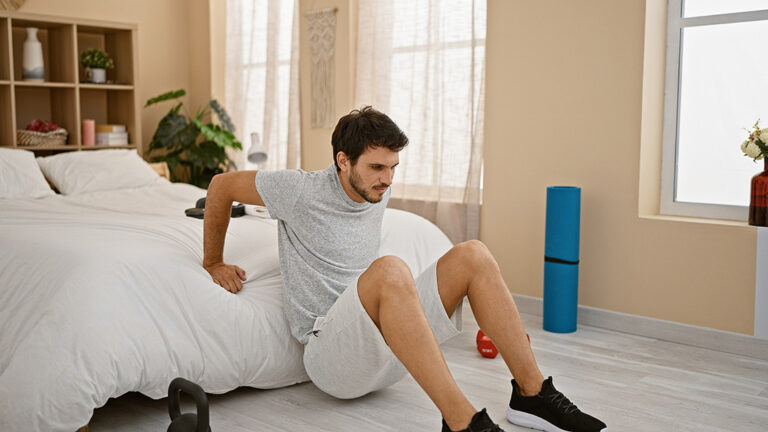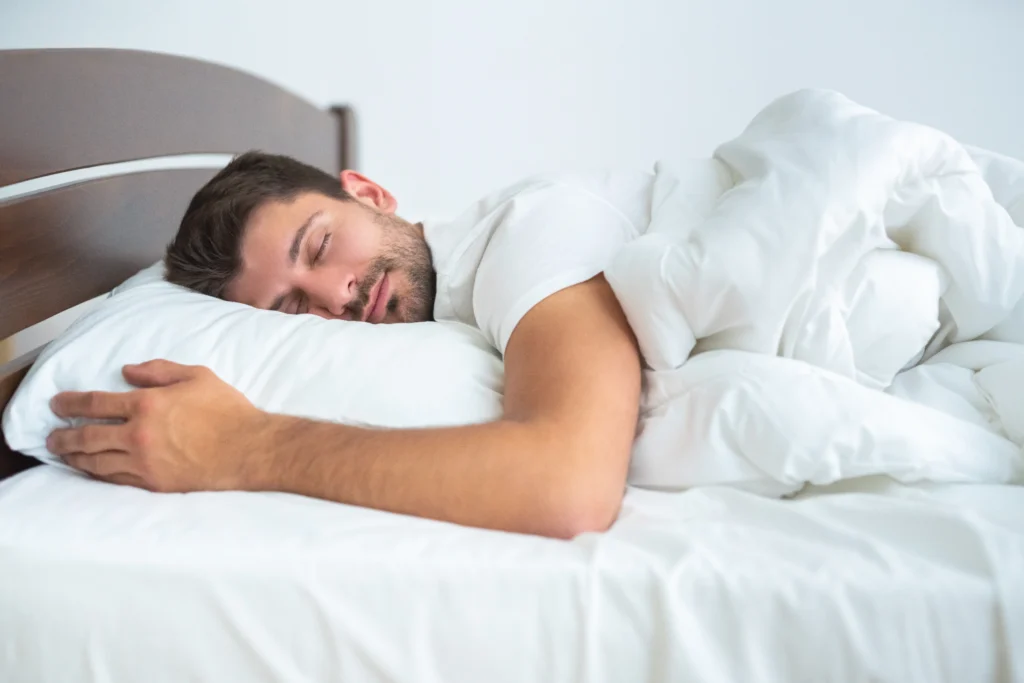
The Ultimate Recovery Stack: What to Combine with CELLIANT
August 01, 2025 – CELLIANT infrared technology is a powerful passive recovery tool, but how can you maximize its benefits? This is where the idea of a “recovery stack” comes in…

Our society has an incredible fascination and preoccupation with one of the most natural functions in the world: sleep. On the one hand, we glorify the “busy” archetype who scrappily pushes ahead despite getting barely enough sleep. On the other hand, we desperately crave a good night’s rest and feel dispirited when we wake up tired.
First things first, we need to stop glorifying sleep deprivation. The first step is to start reframing our relationship with sleep in general. All our lives, we’ve been taught to get seven to nine hours of sleep each night. But that’s merely a quantitative recommendation. We need to start having discussions not just about the length of sleep, but the quality of the rest. Often, quality is what counts.
For instance, you’ve probably had the experience of getting up in the morning and feeling lousy despite being in bed for the recommended number of hours. The problem wasn’t that you didn’t sleep. It was that you didn’t sleep well. Fortunately, sleep technology has made it possible to begin taking qualitative measurements of our sleep at home. For example, wearable devices, such as WHOOP, analyze wearers’ sleep quality by tracking factors like sleep stages and resting heart rate.
Thanks to wearable technology, we can measure our sleep quality at home more easily than ever before. But, determining how to actually achieve restorative sleep can be an elusive mystery. As we work towards prioritizing sleep quality over quantity, it is important to develop a personalized sleep routine that fits your lifestyle and boosts your overall well-being.
If you’re not someone who likes following a schedule, you may balk at the idea of coming up with a sleep routine. Trust me: It’s worth the effort. You wouldn’t run a race without the proper training or stretching, correct? Sleep is like a nightly race. When your body isn’t primed for relaxation, your sleep quality will be at risk.
By getting your mind and body into a more consistent sleep routine, you’ll alleviate problems like feeling groggy in the morning or chugging too much caffeine to stay alert during the day. (And it’s well-known that over-caffeination can lead to a self-perpetuating cycle of poor sleep.) You’ll also have much more energy to tackle all the to-dos on your list successfully.
Wondering exactly how to increase restorative sleep? Below are some of ways to shake up your approach to sleep in a positive way and get more rest.
We know that some technology should be avoided around bedtime, such as scrolling through your phone (blue light from screens has been found to make us feel alert, which is not ideal for winding down at night.) But, not all technology is bad for sleep. In fact, wearable technology and sleep can go hand in hand. As mentioned, the WHOOP device and app can be extremely helpful in measuring sleep. There are other apps and devices on the market that report on valuable sleep and health metrics as well, including the Oura Ring, Apple Watch and FitBit.
It is important to research each of these technologies before picking one to try, and equally important to use it consistently to observe your sleep. Having data at your fingertips (literally, with the Oura) helps you mesh quantitative, objective physical responses with qualitative insights.
You may even want to start a sleep journal to record your wearable data as well as your feelings in the morning. That way, you can begin to see how lifestyle adjustments like switching up your diet and exercise or trying light therapy or meditation move the needle toward improved sleep.
We spend approximately one-third of our lives in bed. Accordingly, your bed, bedding and bedroom need to be treated as a sacred place that’s well-deserving of investments designed to bolster sleep quality.
In terms of furnishings, you may want to install black-out curtains or purchase a mattress that leverages thermoregulation technology. There is an exciting plethora of new sleep technologies that can be built into your sheets, pillows, and blankets, such as bioceramic minerals that emit infrared light, which can promote restful sleep, increase comfort, and speed up recovery following fatigue.
CELLIANT® is a leading infrared textile technology that has been clinically demonstrated to promote restful sleep. It can be incorporated into any fabric component of your bedroom, from your mattress cover to your sheets and pillowcases, to your pajamas, slippers and more. To try CELLIANT sleep products for yourself, check out our partners’ infrared sleep collections:
Turning off all your screens at least an hour before bed is a smart decision. Another smart decision is reading before bedtime, and what you read may be as important as the act of reading. Why not pick up a book about sleep so you can better understand how to improve restorative sleep?
Reading books about wellness topics like sleep can inspire you to create and stick with new habits. Right now, I have a book by Olivia Arezzolo, Australia’s leading sleep expert, on my bedside table. The book is about understanding your personal sleep archetype (bear, lion, or wolf.)
If you don’t enjoy reading, you can always try an audiobook or listen to a podcast. Matt Walker’s TED Talk, “Sleep is Your Superpower,” is a real motivator.
Have you ever fallen asleep after eating turkey on Thanksgiving? You’ve experienced the sleep-inducing impact of tryptophan, an amino acid that makes proteins and other molecules in the body that are essential for sleep. (Tryptophan is found in other foods, too, including dairy products, beef, and fish.)
Turkey isn’t the only food that can support better sleep. Cherries contain melatonin, known to be a natural sleep aid. Nuts and seeds, such as chia seeds, contain magnesium, another sleep-friendly ingredient. Do a little research, and you’ll find that there are tons of foods known to prompt higher-quality rest.
Of course, it’s not just what you eat but when and how much. Try to finish your last meal around three or four hours before bed. Make sure it’s light so your body has time to digest everything, because it could be challenging to reach REM sleep on a full belly.
No matter how much we like to hold up the hustle culture, there’s no glory in meeting the dawn groggy-eyed. Instead of depriving your brain and body of the sleep you deserve and need to be successful in everyday life, take steps to increase your restorative sleep. You’ll be amazed at how much better you feel and perform when you’re truly wide awake and well-rested.
If you are looking for where to buy CELLIANT-infused bedding to get started on building the sleep routine of your dreams, explore the full list of our brand partners. For brands looking to incorporate infrared textile technology into their product lines, please fill out the form below to get in touch with a member of our team.



August 01, 2025 – CELLIANT infrared technology is a powerful passive recovery tool, but how can you maximize its benefits? This is where the idea of a “recovery stack” comes in…

July 10, 2025 – In a growing world of performance and wellness textiles, CELLIANT stands out as a clinically tested tech that transforms body heat into infrared energy. But how do you know if CELLIANT is right for you?…

June 16, 2025 – This past May, the Fairmont Austin buzzed with biohackers, tech exhibitors, keynote speakers and wellness enthusiasts. Team CELLIANT was on-site to see the latest showcase of future-forward wellness innovation…
To access all of our reports please input your email below.
Contact us at marketing@celliant.com
Thank you for your request. Please download the brochure below.
Sign up for the latest Celliant news and innovations.
REQUEST INFORMATION